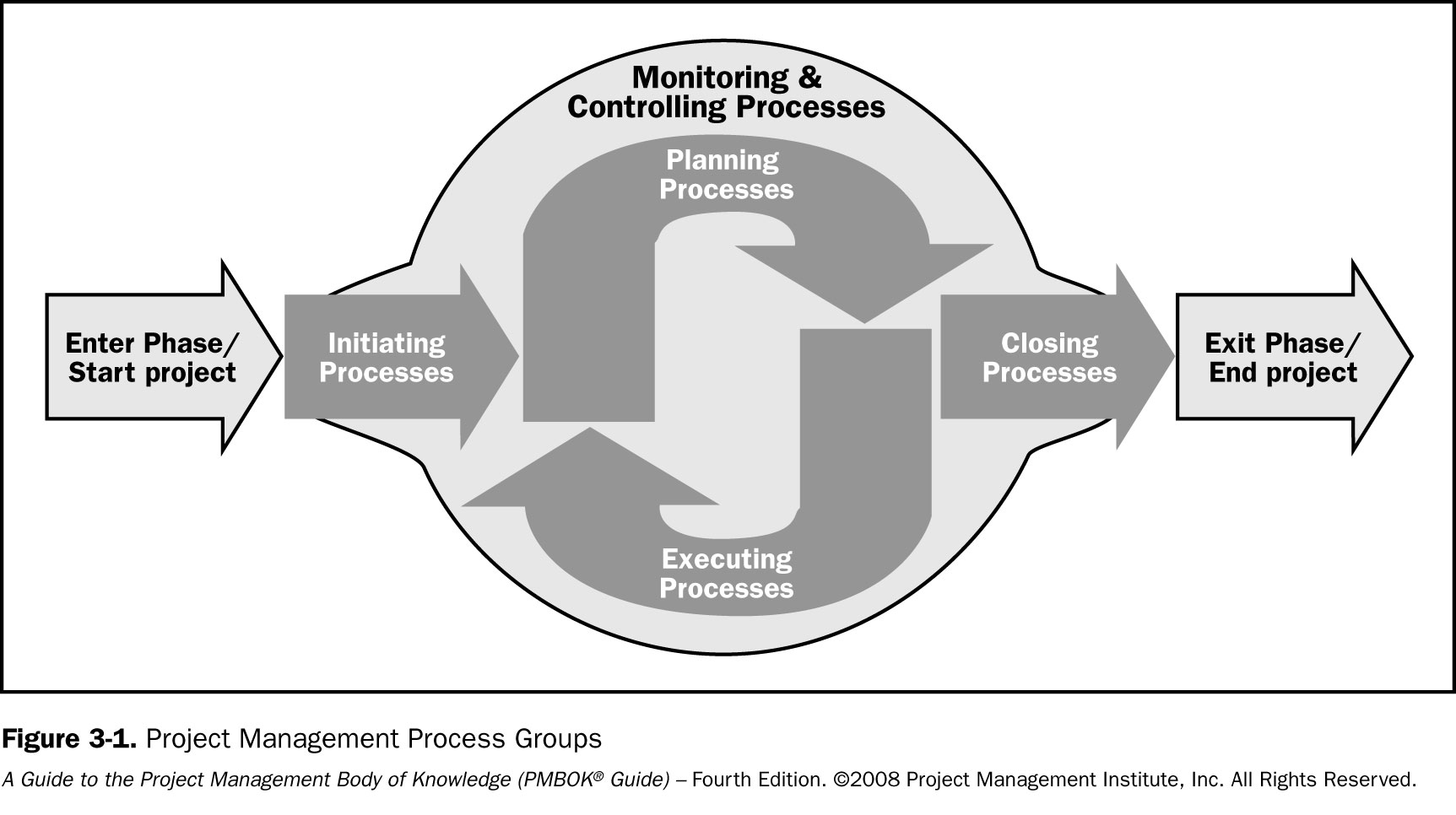We recently had the honor to have Mr. R. Max Wideman publish a guest paper for us with the title, Redefining Project Management; which we are re-publishing as a series of blog articles. This is fourth article in the series.
Earlier Articles
- In Part 1, we provided an introduction to the series and why we need to redefine project management,
- In Part 2, we explained the differences between project life cycle and project life span,
- In Part 3, we discussed project phases, project stages and how we use each term,
- In this part, we will address the last piece of the puzzle, PMBOK® Guide Process Groups, before we can put the puzzle together.
The PMBOK® Guide Process Groups
In the minds of many students, and project management professionals (PMP) for that matter, the process groups are a dominant part of the PMBOK® Guide. Indeed, Guide specifically states: “Chapter 3 is the standard for project management.”[1] So in this section (today’s article), we will continue to build and discuss the various pieces of our basic project management puzzle. The following are the main points relating to process groups:
- The term “process group“‘ is made popular by the PMI® since it is a foundational element in the PMI Project Management Framework, as is described in A Guide to the Project Management Body of Knowledge (PMBOK® Guide).
- “Process groups” refers to a specific group of processes, each consisting of two or more (sub) processes that are used to help us manage a project or a phase of a project.
- These process groups are called: Initiation, Planning, Executing, Monitoring & Controlling, and Closing.
- They are derived from the well-known quality cycle of plan-do-check-act.
- Together, these process groups encompass 42 processes.[2]
- If we are not mistaken, the five process groups have been around since the original PMBOK® Guide was published in 1996.
- However, the number of processes within these groups has changed over time; the 4th edition has 42 processes; earlier versions had more, or less.
- It is also possible that some specific processes have shifted from one process group to another in subsequent editions.
The following figure is Figure 3-1 is from the PMBOK® Guide[3] and represents the interaction of the process groups within a project or phase.
 How do we use the process groups?
How do we use the process groups?
Basically the processes of these groups repeat in every stage (or phase) of the project.
We apply stage initiation, stage planning, stage execution, and stage closing, as well as stage monitoring and controlling throughout each stage. Once we conclude a stage, we move to the next stage and we repeat the applicable processes.
The unfortunate situation is: many practitioners do not understand, or have forgotten, the above ritual. These practitioners think that “we initiate the project, plan the project, execute the project, monitor and control the project, and close the project” and indirectly these process groups become project phases.This is the main confusion that we are trying to clear in this series of articles.
Next articles, we put the pieces of the puzzle together.
Your thoughts?
___________________________________________
[1] PMBOK® Guide, Fourth Edition, 2008, Chapter 1, Introduction, p3
[2] Per the 4th edition, published in 2008 by the Project Management Institute (PMI) and all copyrights reserved to PMI. The upcoming 5th edition has 47 processes.
[3] The figure is copyright to PMI.

Yes, your statements are completely correct and it would be great to clear up this misunderstanding with the project management community. It is true that processes have changed process groups through the different versions of the PMBOK(r) Guide. For example, Manage Stakeholder Expectations and Manage Project Team were moved from M&C to Executing – presumably to make the processes more proactive.
Have you ever thought about publishing an ebook or guest authoring on other
sites? I have a blog based on the same information you discuss and would
really like to have you share some stories/information. I
know my viewers would appreciate your work. If you’re even remotely interested, feel free to send
me an e-mail.